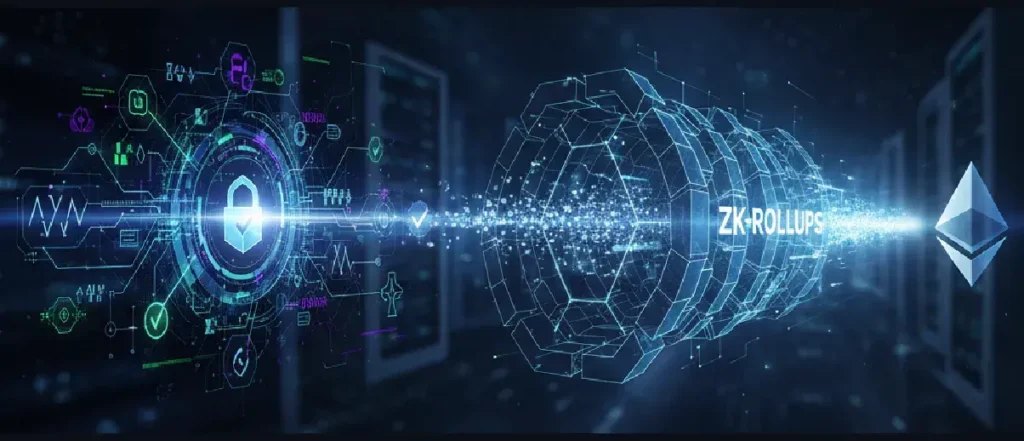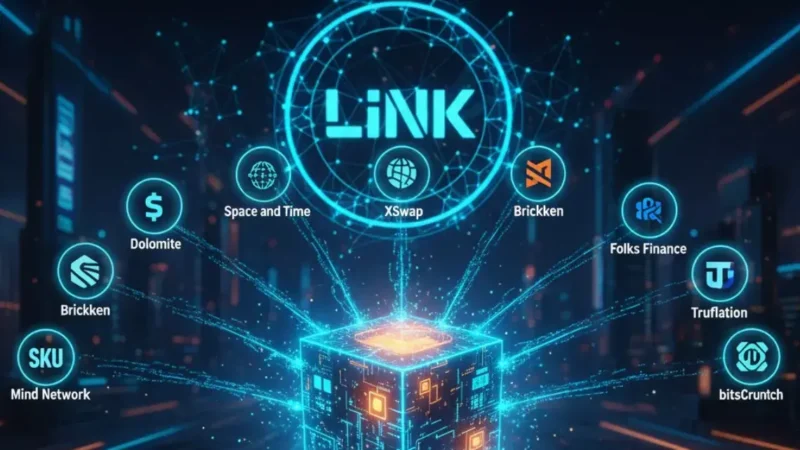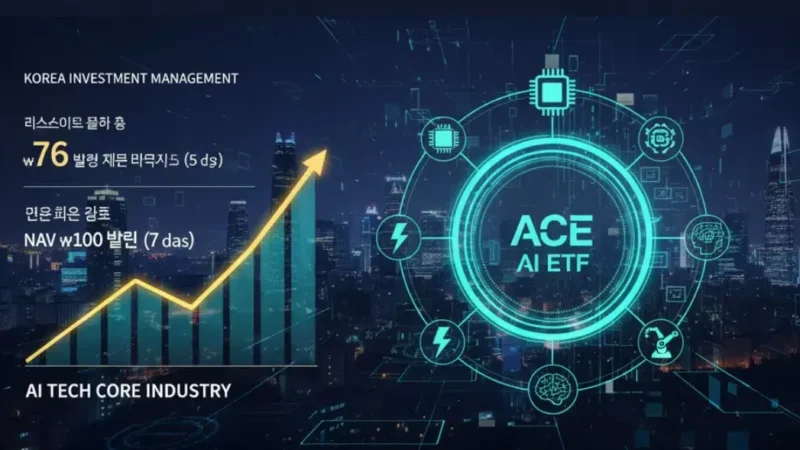Zero-Knowledge Proofs & zk-Rollups: What You Need to Know

The ambition of a decentralized world hinges on the scalability of its underlying infrastructure. For years, the blockchain space has wrestled with the “Trilemma”—the seemingly impossible balancing act between decentralization, security, and scalability. Ethereum, the dominant smart contract platform, has suffered from high transaction costs (Gas) and slow speeds due to its prioritized security and decentralization. The solution? A revolutionary cryptographic mechanism known as Zero-Knowledge Proofs (ZKPs), which powers the most promising Layer 2 (L2) scaling solution: zk-Rollups.
This technology isn’t just an upgrade; it’s a paradigm shift. If you’ve ever wondered how Ethereum can handle billions of transactions without compromising its core tenets, or what makes zk technology crypto’s ultimate answer to scaling, you need to understand the mechanics of ZKPs and how zk rollups explained solve the trilemma.
The Core Technology: Zero-Knowledge Proofs (ZKPs)
A Zero-Knowledge Proof is a cryptographic method where one party (the Prover) can convince another party (the Verifier) that a given statement is true, without revealing any information beyond the validity of the statement itself.
The core idea is simple yet profound: Proof without Data.
What is a Zero-Knowledge Proof (ZKP)?
To illustrate, imagine you have two sets of jigsaw puzzle pieces, and you want to prove to a friend that both sets are identical without showing them the pieces or the completed puzzles. A ZKP allows you to perform an action (like running a complicated algorithm) that proves the equivalence, creating a small, simple-to-verify certificate of truth, while the original secret (the exact puzzle pieces) remains hidden.
In the context of the zero knowledge proofs blockchain, this translates into monumental efficiencies:
- Validity: You can prove a transaction is valid (e.g., “Alice sent 1 ETH to Bob and had the funds”) without revealing the details of the transaction to the L1 chain.
- Privacy: It can enable private transactions or identity verification without exposing sensitive data.
- Efficiency: Instead of executing and verifying every single transaction, the L1 chain only needs to verify the single, tiny cryptographic proof that attests to the validity of hundreds or thousands of transactions bundled together.
Types of Zero-Knowledge Proofs
While the field is constantly evolving, two primary types of ZKPs dominate the current zk technology crypto landscape:
- ZK-SNARKs (Zero-Knowledge Succinct Non-Interactive Arguments of Knowledge): These proofs are “succinct” (small and fast to verify) and “non-interactive” (requiring only a single message from the Prover to the Verifier). However, they traditionally require a trusted setup phase, where a set of secret parameters must be generated and then immediately destroyed to prevent malicious actors from minting false proofs.
- ZK-STARKs (Zero-Knowledge Scalable Transparent Arguments of Knowledge): Developed to eliminate the need for a trusted setup, STARKs are “transparent.” They are generally larger and slower to verify than SNARKs, but their reliance on simpler hash functions (instead of complex elliptic curve cryptography) makes them more quantum-resistant and “scalable” for larger computations.
The power of these cryptographic tools is that they transform the L1 chain’s role from being an execution environment into being a verifier of validity proofs. This is the fundamental engine that powers zk-Rollups.
Scaling Ethereum: The Rise of zk-Rollups
zk-Rollups are a Layer 2 (L2) scaling solution that dramatically increases Ethereum’s throughput by moving computation and state storage off-chain, while maintaining the security of the Layer 1 (L1) mainnet. They are essentially a system for batching thousands of off-chain transactions into a single compressed transaction “package” or “rollup.”
What are zk-Rollups?
The core mechanism of zk rollups explained is surprisingly elegant. Instead of submitting every transaction to the Ethereum mainnet, the zk-Rollup protocol:
- Executes Transactions: Transactions are executed on the L2 chain.
- Generates Proof: A cryptographic proof (usually a ZK-SNARK or ZK-STARK) is generated that confirms the validity of all transactions in the batch.
- Submits to L1: The L2 network then sends two things to the L1 smart contract:
- A highly compressed version of the transaction data (for data availability).
- The single, succinct validity proof.
The L1 smart contract verifies this proof. If the proof is mathematically sound, it instantly accepts the state change for all transactions in the batch. This means the L1 chain trusts the validity proof over re-executing the transactions, achieving massive scaling. This is why zk rollups explained have become the preferred L2 architecture for the Ethereum community.
zk-Rollups vs. Optimistic Rollups
To fully appreciate the efficiency of zk rollups explained, it helps to compare them with their main competitor, Optimistic Rollups.
| Feature | zk-Rollups | Optimistic Rollups |
| Verification Method | Validity Proofs (ZKPs): Transactions are proven valid before being submitted to L1. | Fraud Proofs: Transactions are assumed valid unless proven otherwise (optimistic). |
| Withdrawal Time | Instantaneous: Once the ZKP is verified by the L1 contract (usually minutes), assets can be withdrawn. | 7-Day Challenge Period: Users must wait up to a week for withdrawals to allow time for a fraud proof to be submitted. |
| Security Mechanism | Cryptographic certainty. | Economic certainty (stakers are penalized for fraud). |
| Complexity | Highly complex cryptography (difficult to build). | Less complex (easier to implement). |
The key advantage of the zk rollups explained approach is the rapid finality and superior security derived from cryptographic proof. You don’t have to wait a week, because the validity is guaranteed by mathematics, not by human monitors.
The Next Frontier: The zkEVM
While zk-Rollups are incredible for scaling, the earliest versions were not fully compatible with the Ethereum Virtual Machine (EVM). This forced developers to rewrite their smart contracts in custom languages for the ZK environment, hindering adoption. Enter the zkEVM.
What is a zkEVM?
A zkEVM (Zero-Knowledge Ethereum Virtual Machine) is a virtual machine environment that executes transactions in a way that is compatible with ZK proof generation, while also being compatible with the existing Ethereum development stack (Solidity, tooling, etc.). Essentially, it allows smart contracts written for Ethereum’s L1 to run seamlessly on a zk-Rollup, benefiting from the lower costs and higher speed.
The challenge in building a zkEVM lies in the EVM’s complexity. The EVM was not designed to be “ZK-friendly,” making the cryptographic circuitry required to prove every single EVM operation (from Gas calculation to memory access) extremely complex and computationally expensive.
The Four Types of zkEVM
Vitalik Buterin categorized zkEVMs into four types based on their degree of EVM equivalence. This spectrum highlights the trade-off between compatibility and proof generation efficiency:
- Type 4: Language-Equivalent: Focuses on compiling code from high-level languages (like Solidity) directly into a ZK-friendly language. This makes proof generation fast but requires developers to use a new compiler, offering the least EVM compatibility.
- Type 3: Bytecode-Equivalent: Fully compatible with EVM bytecode, but compromises on full compatibility with precompiles or other minor features. This is a common path for early zkEVMs to achieve quick deployment.
- Type 2: EVM-Equivalent: Fully compatible with the EVM’s underlying structure, but not necessarily its storage or memory. This is the goal for most projects, offering the highest developer experience.
- Type 1: Ethereum-Equivalent (The Holy Grail): A perfect, zero-knowledge version of Ethereum itself, compatible with everything at the deepest level. This is the most challenging to build but offers the ultimate scaling solution for the entire Ethereum ecosystem.
The development of the zkEVM is arguably the most significant race in the zk technology crypto space today, promising to unlock Ethereum’s full scaling potential.
Security, Adoption, and the Future of ZK Tech
The security of zk-Rollups ultimately rests on two pillars: the cryptographic soundness of the ZKP itself (ensuring a false statement can never generate a valid proof) and the integrity of the data availability mechanism.
Data Availability and Security
Even though the L1 chain doesn’t need to re-execute every transaction, it still needs to be able to reconstruct the L2 state if the L2 operator (the sequencer) were to disappear or act maliciously. This is achieved by posting the compressed transaction data (called a “CallData”) directly onto the Ethereum L1 chain. Because this data is available to anyone, the network can be certain that the L2 state can always be recovered. This mechanism guarantees that the zero knowledge proofs blockchain model inherits Ethereum’s robust security.
The Ecosystem and Future
The adoption of zk-Rollups is accelerating, with major protocols launching. Projects like Polygon zkEVM, zkSync, and Scroll are pioneers in the zkEVM sector, all vying to onboard the next generation of decentralized applications.
The next evolutionary step is the concept of Layer 3 (L3) zk-Rollups, which can be seen as application-specific rollups built on top of the L2 zk-Rollup. This recursive layering—using ZKPs to verify L2 batches, and L2s to verify L3 batches—can theoretically provide infinite scalability, all secured by the cryptographic certainty of zero knowledge proofs blockchain. The phrase zk rollups explained will soon be synonymous with “scalable blockchain architecture.”
Stay informed, read the latest crypto news in real time!
Conclusion
Zero-Knowledge Proofs are not merely a niche cryptographic tool; they are the foundational technology underpinning the future of a highly scalable, yet secure, decentralized internet. By allowing computation to happen off-chain and only verifying the proof of its validity on-chain, ZKPs and zk-Rollups resolve the long-standing blockchain trilemma.
The move toward full zkEVM equivalence will finalize this shift, making the L2 experience indistinguishable from L1, but cheaper and faster. For anyone tracking the evolution of digital finance, understanding zk rollups explained is crucial, as this technology will shape the infrastructure of Web3 for decades to come.





2 thoughts on “Zero-Knowledge Proofs & zk-Rollups: What You Need to Know”